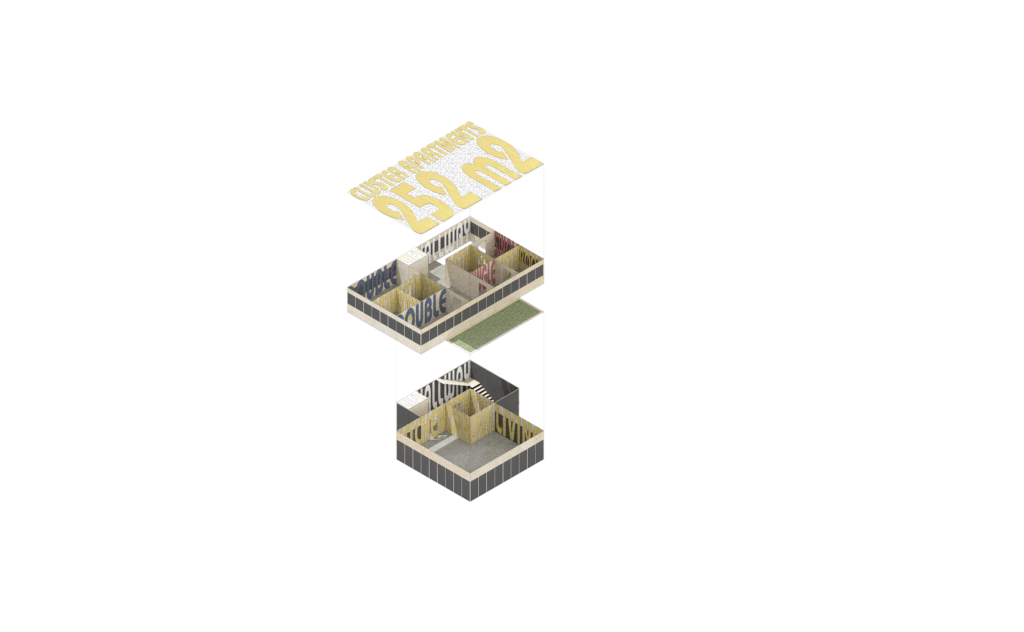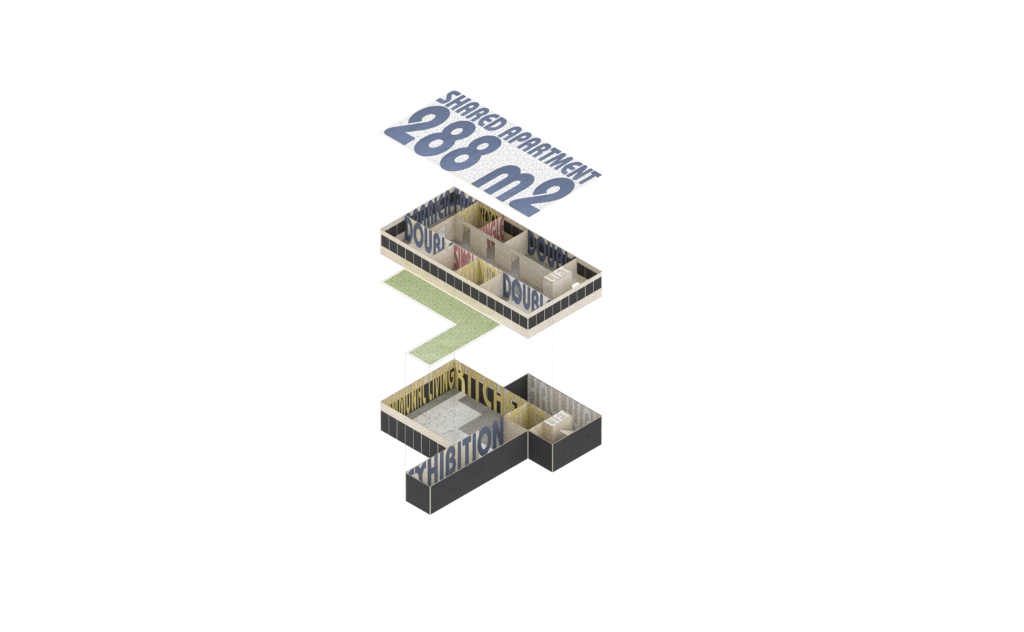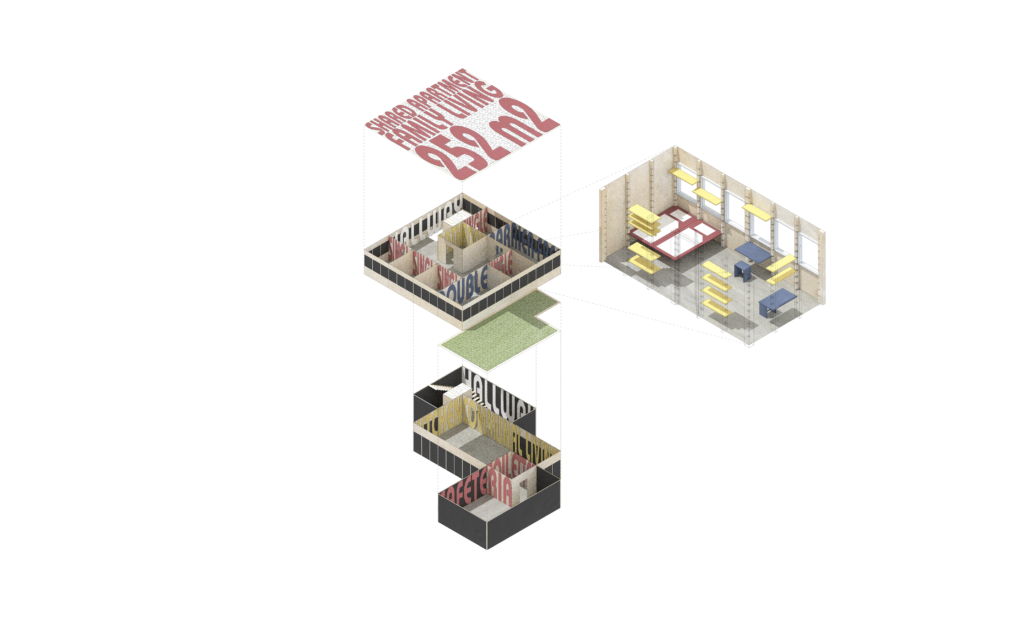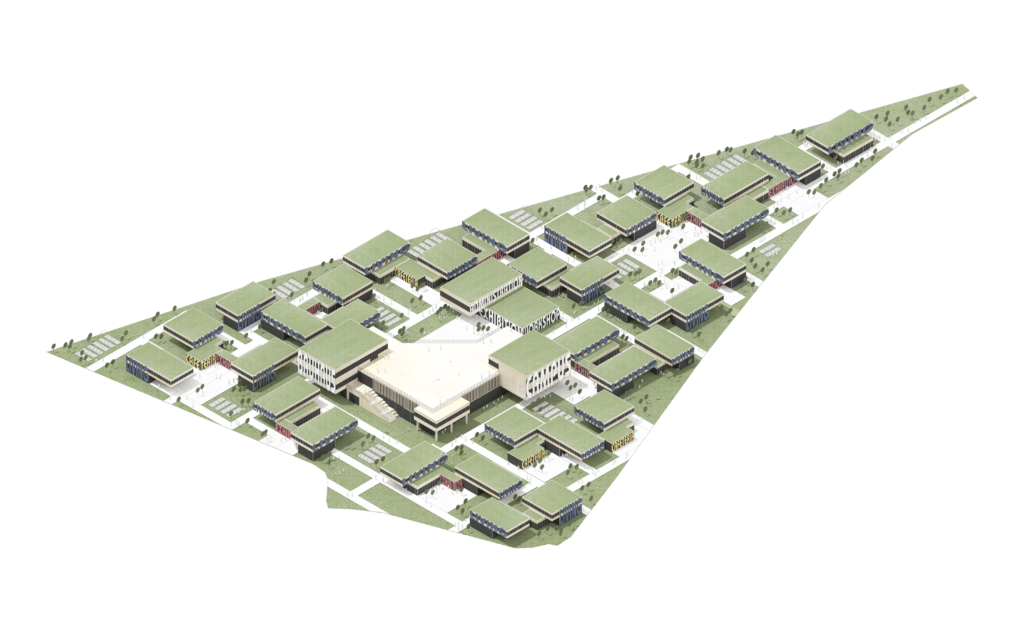“an overall urban planning analysis of the city dessau was carried out, which clearly showed the inadequacies and class character of this ‘model city’. without exception, the workers‘ quarters were located in the blight zones of industry, and the cultural facilities were concentrated in the residential zones of the wealthy population.”
the continuous urbanistic problem of adequate affordable housing demands living spaces that are not exclusive for members of the campus. this will further encourage low-threshold exchange and prevents the bauhaus from turning to an ivory tower.
„on the one hand, we must strive to educate each young person in such a way that he develops in an original way, characteristic of himself, so that he remains creative; on the other hand, we must acquaint him with all the laws of the artistic means of representation which he must master in order to be able to form his original and novel ideas.”
the teaching concept that constitutes the building provides for self-determined learning and work. the proximity of the auditorium, workplaces, library and workshops enables individual creative development.
in our concept, the idea of Joost Schmidt’s informative and non-commercial exhibition bunks is integrated into the residential buildings. providing thorough education, independent and non-institutional exposition should be possible here, so that everyone has the opportunity to present their own results in a permanently rearranging show. directly adjacent to the living areas, yet accessible without restrictions for visitors, the exhibition areas allow public and private sphere to merge. the netting of individual exhibition bunks stretches across the entire campus and ensures that visitors experience the exhibition spaces and the campus in an explorative way.
“‚plug type furniture‘ was discovered, which could be easily assembled from individual elements. the life of the masses had become more mobile, […] one had to move more often. […] relatively large furniture deliveries were made for whole appartement units or even buildings, based on the idea of combining all individual pieces of furniture by standard dimensions. this allowed the user to arrange (change) the whole furniture ensemble for any purpose.”
the wooden post-and-beam structure and living environment are connected via the use of plug type furniture. standardized wooden planks guarantee customizable room layouts for different purposes.







